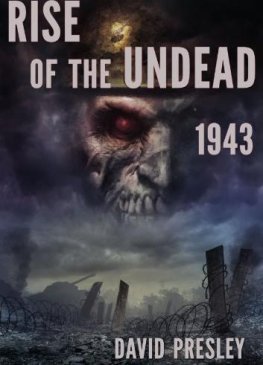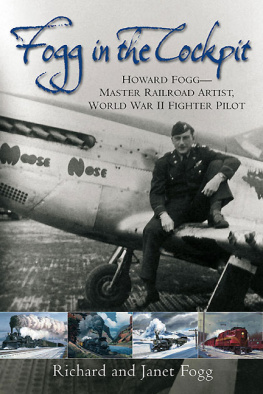
This edition is published by PICKLE PARTNERS PUBLISHINGwww.picklepartnerspublishing.com
To join our mailing list for new titles or for issues with our books picklepublishing@gmail.com
Or on Facebook
Text originally published in 2001 under the same title.
Pickle Partners Publishing 2014, all rights reserved. No part of this publication may be reproduced, stored in a retrieval system or transmitted by any means, electrical, mechanical or otherwise without the written permission of the copyright holder.
Publishers Note
Although in most cases we have retained the Authors original spelling and grammar to authentically reproduce the work of the Author and the original intent of such material, some additional notes and clarifications have been added for the modern readers benefit.
We have also made every effort to include all maps and illustrations of the original edition the limitations of formatting do not allow of including larger maps, we will upload as many of these maps as possible.
They Too Served 496th Fighter Training Group, 1943-45
David H. Kelley Major, USAF
Air Command and Staff College Wright Flyer Paper No. 13
TABLE OF CONTENTS
Contents
TABLE OF CONTENTS
REQUEST FROM THE PUBLISHER
Foreword
It is my great pleasure to present another of the Wright Flyer Papers series. In this series, Air Command and Staff College (ACSC) recognizes and publishes the best of the best student research projects from the prior academic year. The ACSC research program encourages our students to move beyond the schools core curriculum in their own professional development and in advancing aerospace power. The series title reflects our desire to perpetuate the pioneering spirit embodied in earlier generations of airmen. Projects selected for publication combine solid research, innovative thought, and lucid presentation in exploring war at the operational level. With this broad perspective, the Wright Flyer Papers engage an eclectic range of doctrinal, technological, organizational, and operational questions. Some of these studies provide new solutions to familiar problems. Others encourage us to leave the familiar behind in pursuing new possibilities. By making these research studies available in the Wright Flyer Papers , ACSC hopes to encourage critical examination of the findings and to stimulate further research in these areas.

John T. Sheridan, Brig Gen (Sel)
Commandant
Preface
In 1944 a young man from Nahant, Massachusetts, experienced World War II as an unsung corporal assigned to an unheralded unit near an obscure English village. Few history books recall his war. But he and his unit personified a brand of service seldom newsworthy, often tedious, always selfless that underpinned Allied victory. This man was my father. This research paper is his units story.
I thank the staff of the Air Force Historical Research Agency, especially Donna Billingsley and Deanna Kendrick, for their cheerful and patient assistance during my research. Diana Simpson, Judy Osborne, and the staff of the Air University Library were universally helpful. Pam Hollabaughs template wizardry and dynamism were wonderful. Thanks to Ron Parker, native of Goxhill, England, for his heartfelt leadership in successfully preserving memories of Anglo-American brotherhood in Goxhill before it was too late.
Dr. Richard R. Muller, dean of Education and Curriculum, thank you for your guidance and contagious sense of wonder in events long past. Finally, my appreciation to the anonymous adjutants, clerks, and executive officers who recorded a glimpse of life in the 496th Fighter Training Group.
Abstract
In-theater combat crew replacement centers (CCRC) represented a brief but important stop for aircrews training as replacements for personnel lost in the European theater during World War II. The Eighth Air Forces 496th Fighter Training Group operated a fighter CCRC at Goxhill, England, and illustrated the unique challenges and successes of the CCRC mission. The 496th Fighter Training Group overcame maintenance shortfalls, aircraft shortages, and persistent morale issues to train more than 2,400 fighter pilots for combat duty in the Lockheed P-38 Lightning and North American P-51 Mustang.
PART I Historical Background
Introduction
This Command desires no Flying School graduates without specialized transition training. Message Gen Carl A. Tooey Spaatz to Gen Henry H. Hap Arnold, 29 March 1943
The decisive contribution of US Army Air Forces (AAF) tactical airpower to Allied victory in World War II is well known. In Europe, Eighth Air Force long-range fighter escorts permitted strategic bombers to penetrate German airspace against the Luftwaffe. Eighth Air Force fighter pilots became saviors for embattled bomber crews courageously flying precision daylight raids on German industrial, power, transportation, and military networks. Eighth and Ninth Air Forces fighter pilots were equally skillful in prosecuting interdiction and close air support (CAS) missions against German targets. What did it take to fight with skill and verve in high-performance fighter aircraft? Teaching a man to fly was one thing: What specialized training was required to couple a skilled pilot to a high-performance weapon system and create a man-machine package of singular lethality?
Purpose
This research paper outlines the historical accounts of the 496th Fighter Training Group (FTG) from activation in December 1943 through inactivation in April 1945. The 496th was an Eighth Air Force in-theater combat crew replacement center (CCRC) in the European theater of operations (ETO). The primary mission of the 496th was to train rated pilots in the Lockheed P-38 Lightning and North American P-51 Mustang for assignment to combat units in the Eighth and Ninth Air Forces.
Methodology
This research paper uses two principal types of sources. First, unit and command level documents archived at the Air Force Historical Research Agency (AFHRA) at Maxwell AFB, Alabama, provided original material. Documentation included monthly unit histories for the 496th and subordinate units as well as miscellaneous correspondence and memoranda. Monthly reports were available for most of the 496ths existence and provided a narrative of activities, challenges, and successes. The daily special order supplied snapshots of the 496th during wara promotion list might be followed by an order for the remains of a student pilot killed in an accident to be shipped without delay via rail baggage to the American Military Cemetery in Cambridge. {1} A comparatively small selection of related orders and correspondence from superior units was also available. Most of the original material was classified Secret or Restricted but was declassified following the war. This research paper retains British spelling convention (e.g., theatre, centre, etc.) where it appears in direct quotations.
Some comments are warranted regarding the primary sources used. Unit histories, orders, and correspondence were official documents and, as such, include a professional discretion that may mask genuine events or intentions. The histories appeared to be relatively objective. But unit histories were, after all, intended to report conditions up the military chain of command so bias, gripes, and soft-pedaling problems all probably occurred to some extent.













